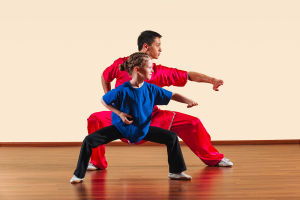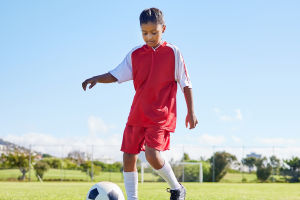One morning, I watched my niece try to balance on one foot while reaching for a toy. It wasn't just play—it was her body learning to control movement and build strength.
Moments like this remind me how kids' physical development is a journey, not a race. But for many parents, the question remains: when is the right time to encourage exercise beyond simple play?
It's more complex than just “start at age X.” It involves understanding developmental stages, safety, and how to inspire kids without turning movement into a chore. Let's explore this together and break down what experts really say about kids and exercise, so we can help our children grow strong and confident for life.
Understanding Early Movement: More Than Just Play
From birth, children's bodies are constantly moving, even if it looks random. This natural activity—kicking legs, reaching arms, rolling over—is critical muscle training and coordination practice. During the first year, infants develop core strength by lifting their heads and eventually crawling. These milestones lay the foundation for later exercise habits.
By the toddler years (ages 1 to 3), kids begin exploring bigger movements like walking, climbing, and running. This stage is vital for balance and gross motor skills. But at this age, “exercise” is really about safe, playful exploration. Structured workouts aren't necessary or beneficial yet; instead, think of movement as discovery.
When to Introduce More Structured Activity
From around age 3 to 5, children are ready for slightly more focused physical activity. This doesn't mean formal workouts but guided play that promotes coordination, strength, and cardiovascular health. Activities like hopping games, simple obstacle courses, and basic sports drills fit perfectly here.
Experts, including the American Academy of Pediatrics, suggest that preschoolers should aim for at least 3 hours of active play daily—broken into light, moderate, and vigorous bursts. It's a wide window, which lets us focus on variety over intensity. The key: activities should always be fun and voluntary.
Starting school-age (around 6 or 7), kids can handle more formal exercise and organized sports. This is when children generally develop better focus and physical control, allowing them to follow rules and instructions safely. Still, intensity and duration should match individual readiness to avoid injury or stress.
Creating Healthy, Sustainable Exercise Habits
Prioritize Enjoyment Over Performance
Children are naturally curious and energetic. When we encourage movement as a joyful experience rather than a task, we set them up for a lifetime of health. Avoid pushing strict exercise routines too early—let them lead their interests.
Include the Whole Family
Movement is more motivating when shared. Family walks, bike rides, or dance-offs not only build fitness but deepen bonds. Parents modeling active lifestyles offer powerful encouragement.
Focus on Balance and Variety
Mixing activities—running, jumping, climbing, stretching—ensures overall physical development. It also prevents burnout or repetitive strain injuries.
Monitor Safety and Progress
Watch for signs your child is ready to advance in physical challenge. Use age-appropriate equipment and safe environments, and don't hesitate to seek advice from pediatricians or coaches specialized in youth fitness.
Lykkers, there's no magic number for when kids should start exercising—it's a gradual, joyful process shaped by development and personality. By tuning into our children's needs and encouraging movement as fun, we can help them build strong bodies and happy minds.
What games or activities do your kids love? Drop your stories or questions below—let's keep our families moving together!


